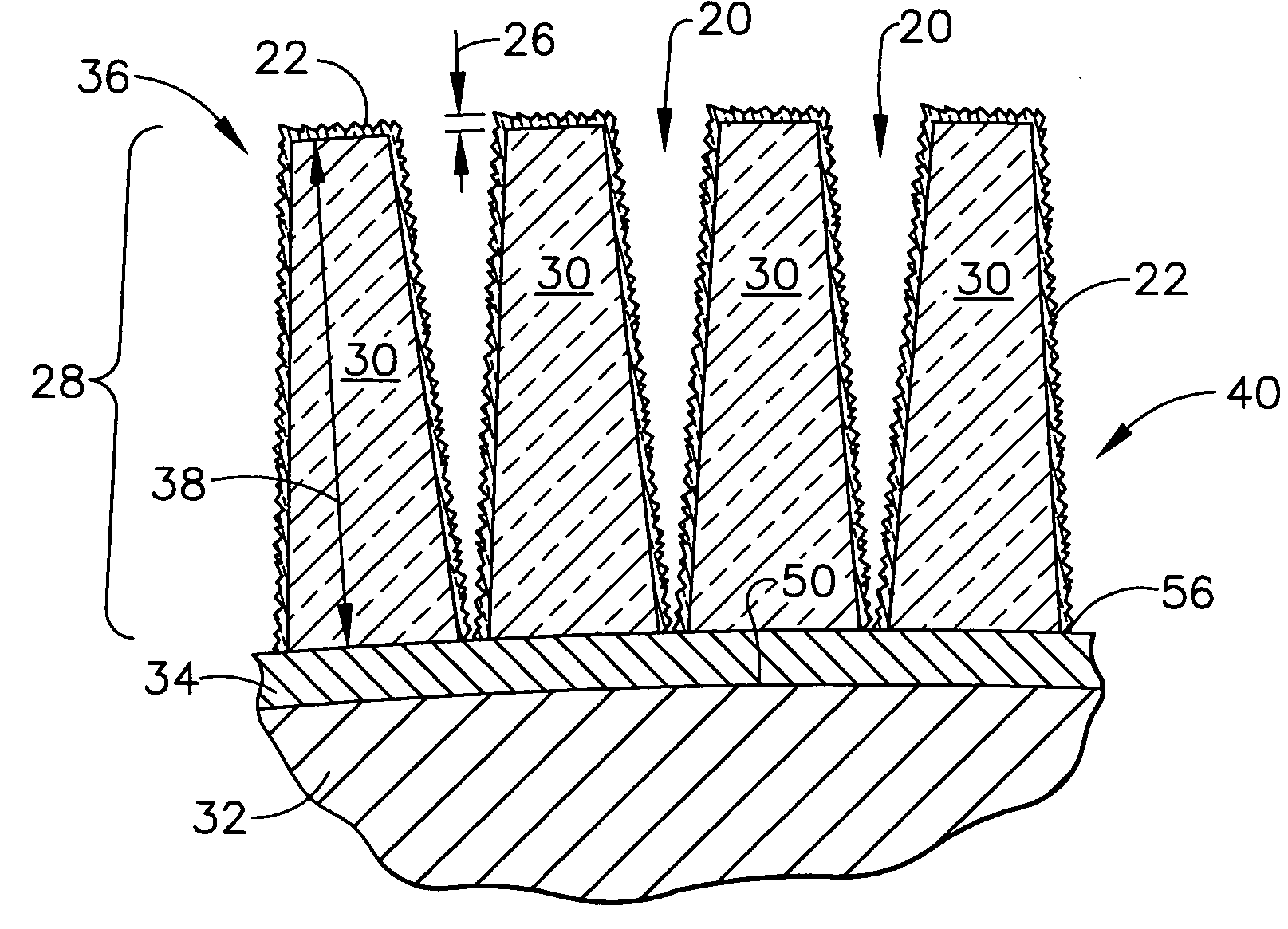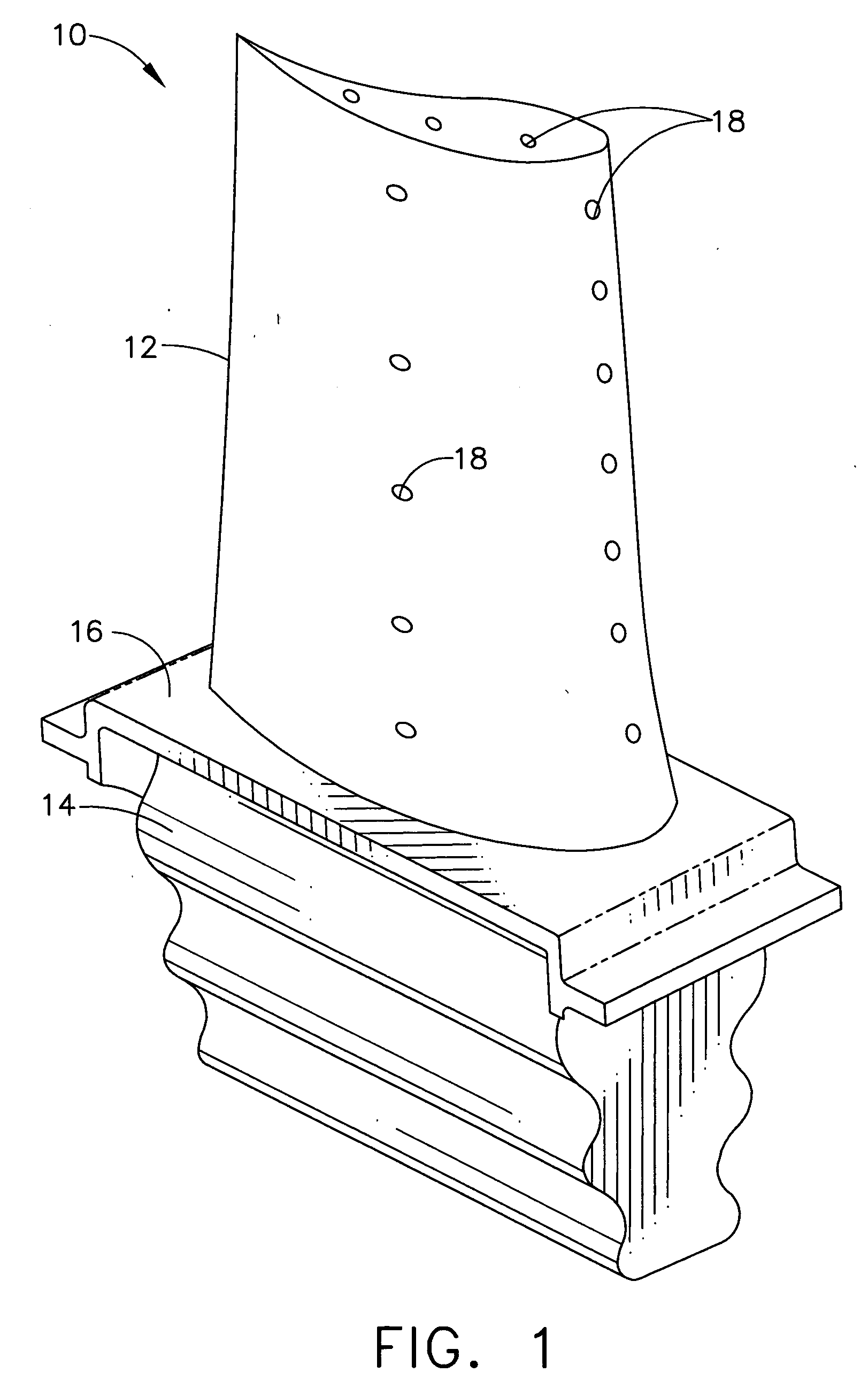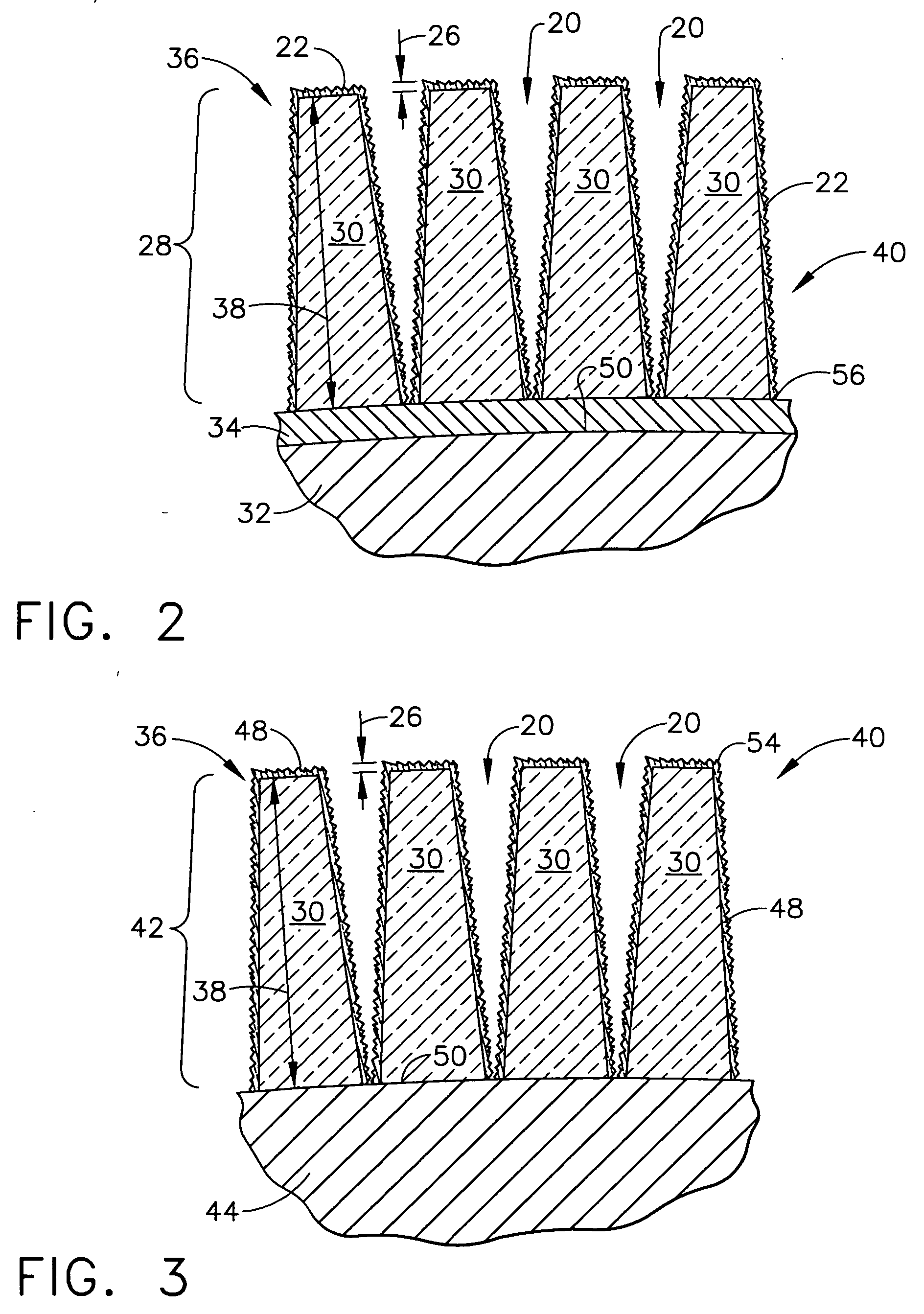Atomic layer deposition for turbine components
a technology of atomic layer and turbine components, which is applied in the direction of machines/engines, superimposed coating processes, natural mineral layered products, etc., can solve the problems of affecting the operation of the turbine, the ceramic layer cannot be extended, and the thermal expansion cannot be accommodated. , to achieve the effect of reducing the risk of atomization, and reducing the thermal expansion ra
- Summary
- Abstract
- Description
- Claims
- Application Information
AI Technical Summary
Problems solved by technology
Method used
Image
Examples
Embodiment Construction
[0027] The following detailed description is of the best currently contemplated modes of carrying out the invention. The description is not to be taken in a limiting sense, but is made merely for the purpose of illustrating the general principles of the invention, since the scope of the invention is best defined by the appended claims.
[0028] The present invention is generally applicable to components that operate within environments characterized by relatively high temperatures (e.g., temperatures in excess of about 1100 degrees C.), and are therefore subjected to severe thermal stresses and thermal cycling. Notable examples of such components include the high and low pressure turbine nozzles and blades, shrouds, vanes, combustor liners, combustor fuel nozzles, combustor shields, and augmentor hardware of gas turbine engines. One such example is the turbine blade 10 shown in FIG. 1. The turbine blade 10 generally includes an airfoil 12 against which hot combustion gases may be dire...
PUM
| Property | Measurement | Unit |
|---|---|---|
| thickness | aaaaa | aaaaa |
| thickness | aaaaa | aaaaa |
| thickness | aaaaa | aaaaa |
Abstract
Description
Claims
Application Information
 Login to View More
Login to View More - R&D
- Intellectual Property
- Life Sciences
- Materials
- Tech Scout
- Unparalleled Data Quality
- Higher Quality Content
- 60% Fewer Hallucinations
Browse by: Latest US Patents, China's latest patents, Technical Efficacy Thesaurus, Application Domain, Technology Topic, Popular Technical Reports.
© 2025 PatSnap. All rights reserved.Legal|Privacy policy|Modern Slavery Act Transparency Statement|Sitemap|About US| Contact US: help@patsnap.com



